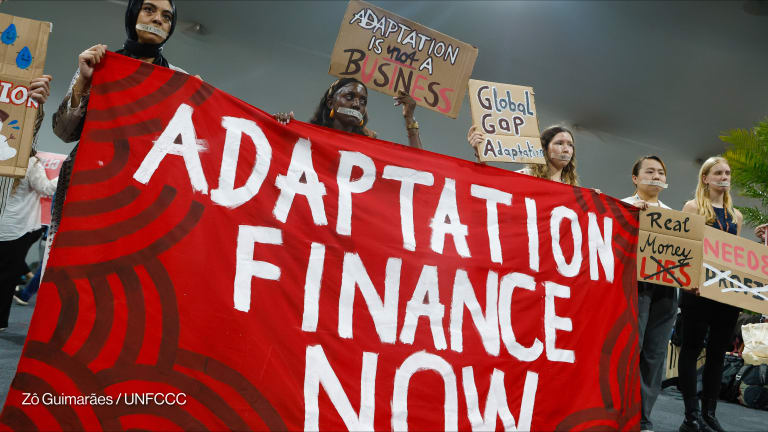
Does your company work in emerging markets and want to be more competitive? Are you curious about how leading CEOs interpret what the private sector can contribute to international development, or how public-private partnerships can be better categorized to help you decide how to set up your own?
We round up three recent reports on these topics and share their top-level insights.
“Developing Winning Products for Emerging Markets”
by Sauri Gudlavalleti, Shivanshu Gupta, and Ananth Narayanan (McKinsey Quarterly, May 2013, 4 pages)
Reaching new customers emerging markets may be a goal for many companies, but achieving success on the ground can be difficult. In their brief article, McKinsey consultants Gudlavellti, Gupta and Narayanan explained, for example, how an Indian company failed to win over the domestic truck market when it failed to account for poor road conditions, overcrowding and infrequent maintenance.
If a local company couldn’t crack the bottom-of-the-pyramid code, how can multinationals hope to get it right? The answer, the authors suggested, lies in what they call “design to value.” This process allows companies to rethink what emerging-market customers need and how best to deliver it.
The article highlights three practices used by leading companies to get ahead in emerging markets:
“Shape up your thinking.” Convene groups representatives from both inside and outside the company in “collision workshops,” where product designers can talk directly with suppliers, marketers and even customers about real-world product functionality. Pulling inspiration from unconventional sources – i.e. not just traditional competitors – can help cut costs and improve overall product design.
“Start from scratch.” Companies have learned the hard way that “stripped down, low-cost” versions of existing products won’t win new customers at the bottom of the pyramid, as Tata learned with its Nano car. The key to redesigning products for low-income customers is to focus on the top one or two most desired product features and deliver those, while leaving out more costly and less desired features. A few leading companies even redesign entire products from the ground up, known as “zero-based design.”
“Design for manufacturability.” Meeting the needs of low-income customers doesn’t end with the design phase. Companies should also “challenge their traditional assumptions well into the manufacturing process” and look for ways to cut costs in order to keep quality products within reach. Making products simpler can not only help reduce price points but also reduce maintenance costs – hurdle that can prevent low-income customers from staying with a product.
“Private Sector Outreach: Results of Consultations with Global Business”
by Unilever (May 2013, 48 pages)
The list reads like a who’s-who of global business: PepsiCo CEO Indra Nooyi, GSK CEO Sir Andrew Witty IBM CEO Ginni Rometty. These were just some of the business leaders who chaired thematic consultations with fellow executives on the post-2015 agenda. Unilever, in partnership with the U.N. Global Compact, led the effort, surveying executives at more than 300 companies through in-country roundtables, CEO-level communications and think-tank reports.
The findings? Business leaders at the highest levels continue to see strong value in the Millennium Development Goals – and a place for themselves at the table. Unilever found consensus among business leaders on six points, according to the report:
The MDGs are “helpful in focusing resources on big social issues” and useful in their “brevity, clarity of purpose, and measurability.”
There should be one agreed-upon development agenda, with businesses contributing by integrating sustainable development into their corporate strategies.
Governments must create an environment hospitable to business and innovation by maintaining peace and security, establishing stable macroeconomic policies, providing infrastructure, investing in human capital, opening markets, and aligning their own procurement processes with environmental and social standards.
Public-private partnerships are a key delivery mechanism for development impact, because they can scale, align skill sets, and leverage private capital for public sector goals. For these partnerships to succeed, however, business leaders emphasized there must be a clear sense of purpose, a willingness to pool resources, and “infinite patience” among partners.
The Unilever authors noted that business leaders who agreed to take part in these consultations likely represent a sub-set of “progressive” executives and companies, and that other businesses may be far less engaged by the MGDs.
The report concluded with a two-page “joint letter” to the high-level panel, which emphasized the business case for the MGDs: “We believe that for the Post-2015 Goals to contribute to delivering the global development agenda it will be essential that they help stimulate business of all sizes around the world to grow and flourish in a responsible and sustainable manner.”
“When Business Meets Aid: Analysing Public-Private Partnerships for International Development”
by Margaret Callan and Robin Davies (Australian National University Development Policy Centre, April 2013, 59 pages)
This academic paper contends that the huge potential of public-private partnerships is still largely unrealized because their “purposes and forms are rarely distinguished and given explicit consideration.” To address this gap, Margaret Callan and Robin Davies, both visiting fellows at Australian National University’s Development Policy Center, propose a new framework and taxonomy for thinking about public-private partnerships for development.
Callan and Davies distinguish among four categories of partnerships:
Inclusive business ventures: These core business activities benefit the population at the bottom of the pyramid. Government-led development agencies play three roles in making these business activities more inclusive: improving the knowledge base for inclusive business activity, providing risk-sharing subsidies, and exercising convening power to broker partnerships.
Pro-poor supply chain initiatives: This consumer-oriented sub-category of inclusive business aims to include the poor in supply chains in an equitable way, while reducing others social or environmental harms created through the supply chain. Labeling and certification mechanisms connect these practices to consumers, by allowing them to choose “products considered to be ethically produced and sustainably managed.”
Public-private partnerships for service delivery: Many private enterprises provide services to their employees and local communities in health and education. Development agencies often assist by providing in-kind contributions or funding to expand and improve the provision of services.
Product development partnerships (PDPs): In response to a “gross mismatch between the burden of illness and investment in health research,” international organizations, private foundations, and some official donors have established partnerships to develop new medicines, health technologies or delivery systems.
The authors raised critical questions about each partnership model and challenged commonly held beliefs about partnerships.
Callan and Davies pointed out, for example, that a surprisingly small amount of evidence exists on public-private partnership impacts and cost-effectiveness. They also questioned the view that partnerships need to be mediated by “brokers” who understand both parties, and the idea that private-sector actors are less “fickle” than public agencies in their financial commitments. The authors argued instead that local businesses are, in fact, “the best and most consistent partners for inclusive business approaches.”
What are you reading? Share your ideas with us at devex-impact@devex.com.
Explore related content:
Join Devex, the largest online community for international development, to network with peers, discover talent and forge new partnerships - it’s free! Then sign up for the Devex Impact newsletter to receive cutting-edge news and analysis every month on the intersection of business and development.


